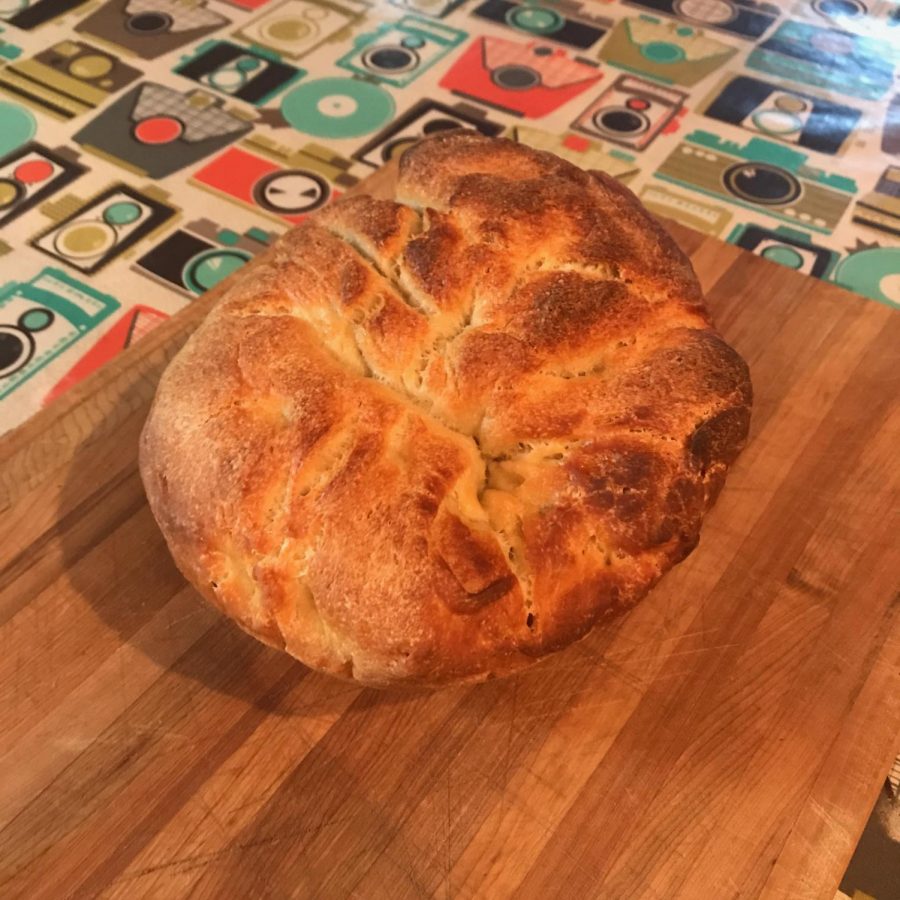Sourdough Bread
February 3, 2019
Since the dawn of civilization, people have baked bread. Nowadays, much of the bread we eat is leavened using active dry yeast or instant yeast, but for most of human history, making bread rise required a longer process. Today, we call bread made with this ancient process sourdough.
While baking bread has been a great joy in my life for many years, I only recently started making sourdough bread. To make sourdough, you need something called a sourdough starter. This is a mixture of flour and water that produces natural yeast and can be used in bread. To maintain a starter, you must “feed” it with more flour and water periodically.
Whenever it’s time to make some bread, you take your starter out of the refrigerator and feed it several times until you get it to a level where the yeast is active enough for the dough. Starters can be renewed continually; some are even maintained and passed down through generations.
There are only two ingredients for a sourdough starter: flour and water. It’s somewhat difficult to make one from scratch, so I recommend getting one that is already made, either by purchasing one or by using a starter that someone else has.If you are ambitious enough to start from scratch, mix a cup of flour and enough water to make a slightly liquid mixture in a container. Next, cover loosely and set aside for a day at room temperature.
The next day, discard half the mixture (about half a cup) and add a cup of flour and a half cup of water, mixing until homogenous. Cover and set aside for another day.Repeat this process of discarding half of the mixture and adding more flour and water for four or five more days. Now, your starter is ready for baking or for setting aside in the refrigerator.
To maintain your starter, store it in the refrigerator and feed it once a week, though if you aren’t using it for a while, you can feed it monthly instead.
When you’re ready to bake something, feed your starter and leave it out at room temperature, repeating every six to eight hours until it doubles in size every time. At this point you can incorporate it into a recipe.
My Favorite Sourdough Recipe
Ingredients:
1 cup (240g) sourdough starter
1½ cups (340g) water
5 cups (600g) flour
2 ½ teaspoons salt
Directions:
Start off by enlarging the starter by combining the starter, water, and 3 cups of flour in a large mixing bowl. Mix until fully combined, at least 1 minute. Cover and rest at room temperature for 4 hours, then stick in the refrigerator overnight or for 12 hours.
Next, add the remaining 2 cups of flour and the salt, then knead the dough together. Cover and rest at room temperature again.
Since wild yeast is imprecise, this part requires more finesse. The dough has to rise until it becomes light and bubbles start to appear. This usually takes around 5 hours, but it can vary based on the strength of the original starter. To assess the progress of your dough and improve its consistency, take the dough out of its container every hour, stretch it out, and then fold it over from each end.
When the dough is done rising, divide it into two halves. Place these halves on a lightly greased baking sheet and cover with greased plastic wrap. Let them rise for 2 to 4 hours, until they puff up. Preheat the oven to 425˚F when rising is nearly complete.
Now, shape the dough pieces into desirable shapes, make a few slashes across the top, and stick in the oven. Bake for 25-30 minutes, then cool for at least half an hour.
* Recipe adapted from King Arthur Flour’s Extra-Tangy Sourdough Bread
This piece also appears in our January 2019 print edition.










